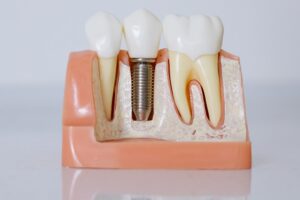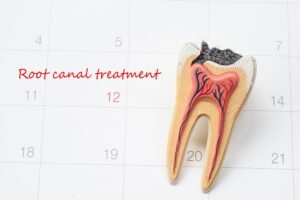During your child’s growing years, you see a lot of transition going on with their teeth. The dropping of baby teeth, the growth of permanent teeth and then the formation of the jaw.As a child begins to grow, the missing teeth are like a big milestone that people see as physical growth in a kid’s life. Then come the funny smiles after the fall of existing teeth and then another round of getting those strong permanent teeth! As this phase is a new process in a lot of people’s lives, and not everybody has specialized dental knowledge, it is very important to understand the growth of permanent teeth and the care required for it. Not just this, you also need to regularly consult the dentist.
How Many are the Permanent Teeth?
Babyteeth, in reality, the “essential teeth” begin coming in when the kid turns 6 months old and continue to come in until age 2 or 3. In the long run, those baby teeth are totally supplanted by permanent teeth – beginning around age five and proceeding through adulthood when insight teeth come in. We are brought into the world with a bunch of 20 essential teeth, which are in the long run supplanted with 32 permanent teeth.
Those baby teeth have a challenging task – in addition to the fKiact that they help our youngsters bite their food, they additionally hold space in the jaw for the bigger permanent teeth to come in. With baby teeth, we have 10 teeth on top and 10 on the base. At the point when our adult or permanent teeth come in, they are bigger in size, and we end up with 16 teeth on the top and 16 on the base
The Growing of Permanent Teeth
The adult teeth ordinarily eject in a similar fashion as the milk teeth did – front base, front top and afterwards back towards molars. Ordinarily, the principal teeth that erupt are quick to come and drop out, just to be supplanted by the permanent teeth. The exemption for this, obviously, is when there is tooth injury because of weak dental cleanliness, ailments or injury (like a mishap) to the mouth, jaw as well as face.
Most youngsters will start to lose teeth when school begins at about age 5 or 6 and will have most of their adult teeth by age 12 or 13. These teeth are the four front teeth for top and base, called central incisors; four lateral incisors, the teeth between the front teeth and canines; four canine teeth; and eight molars. Two of those molars come in without supplanting the child’s teeth which are the main chewing teeth called first molars. They are the first ones to emerge behind existing milk teeth.
The last to grow, on the off chance that they show up is the wisdom teeth. Likewise called “third molars” they may not at any point eject, notwithstanding, if that they do, it is ordinarily between ages 17-21. Your dental specialist will want to make suggestions about cleaning them appropriately until they ought to be eliminated due to space restriction.
The last to grow, on the off chance that they show up is the wisdom teeth. Likewise called “third molars” they may not at any point eject, notwithstanding, if that they do, it is ordinarily between ages 17-21. Your dental specialist will want to make suggestions about cleaning them appropriately until they ought to be eliminated due to space restriction.






